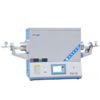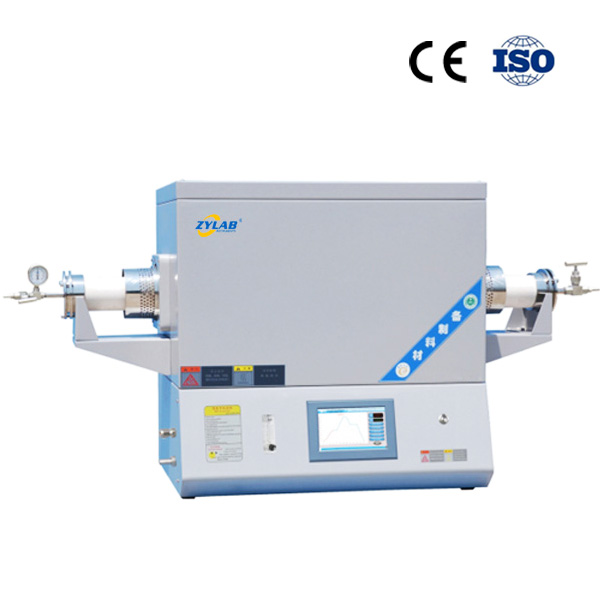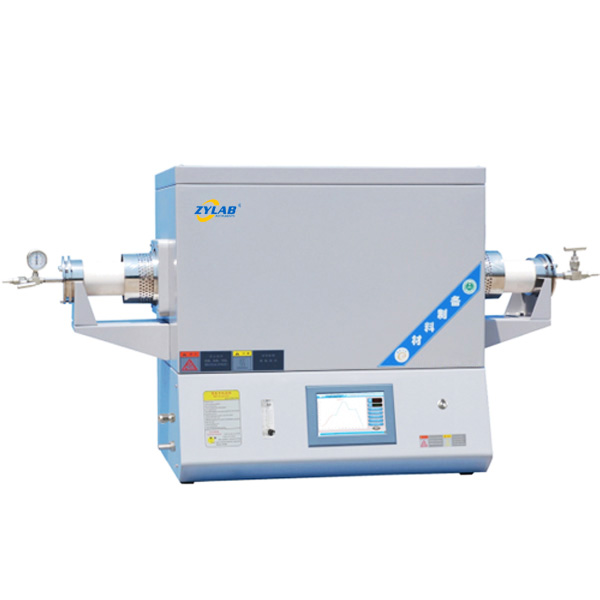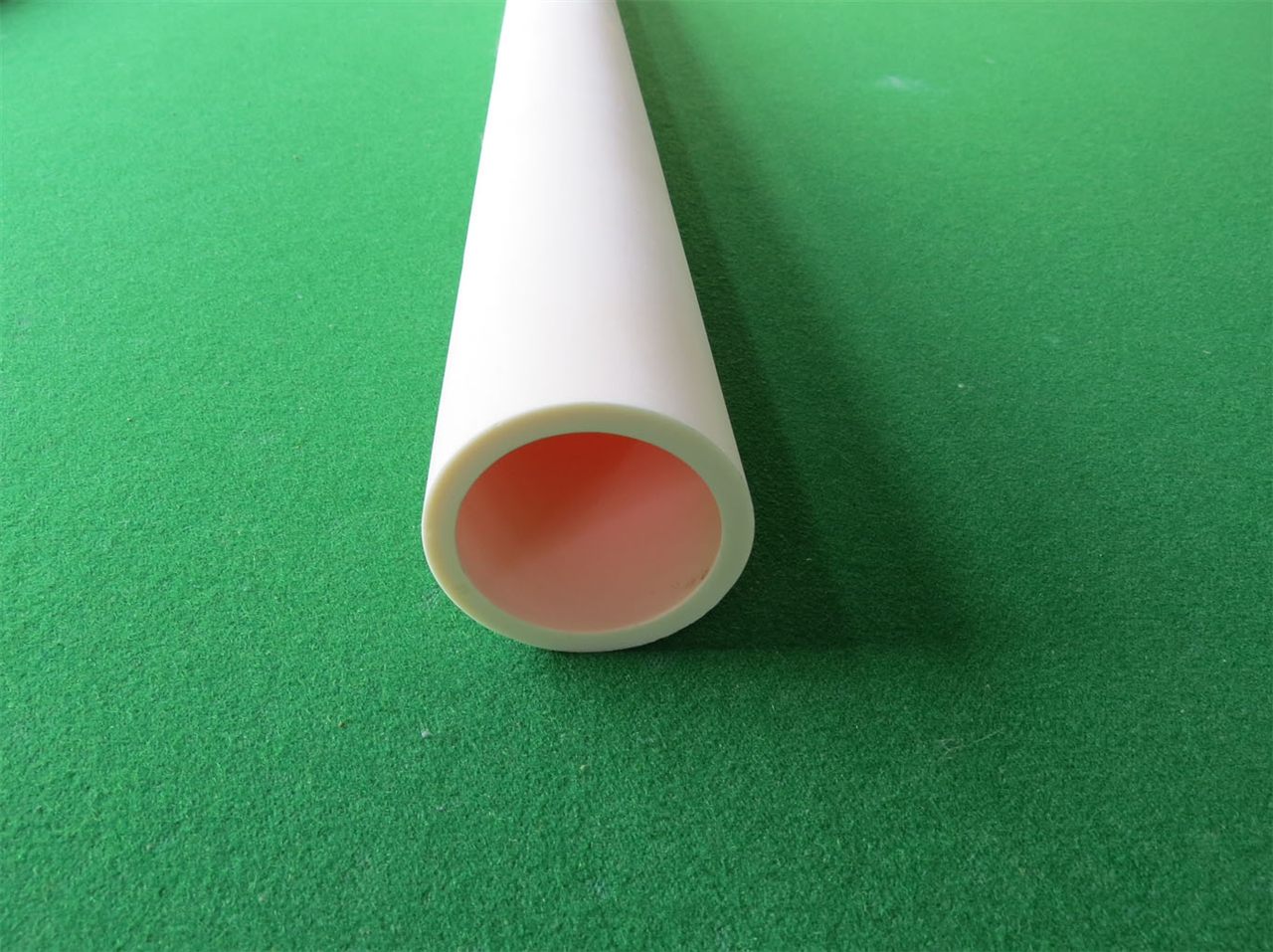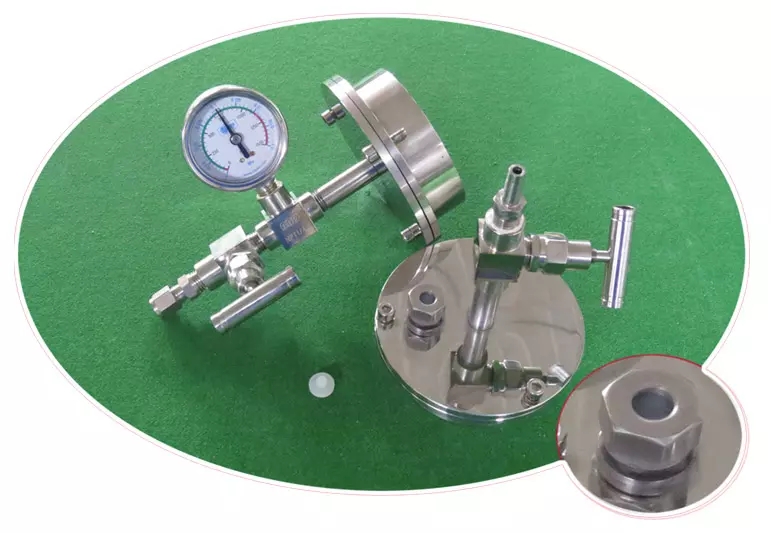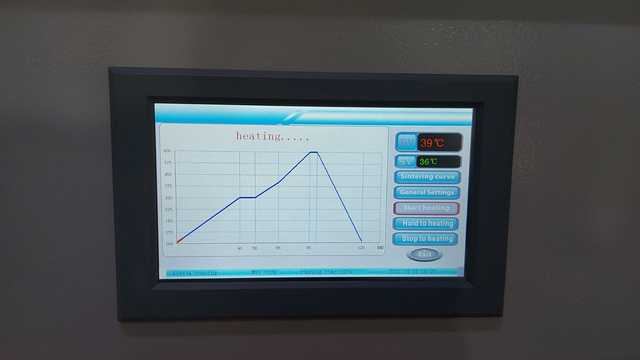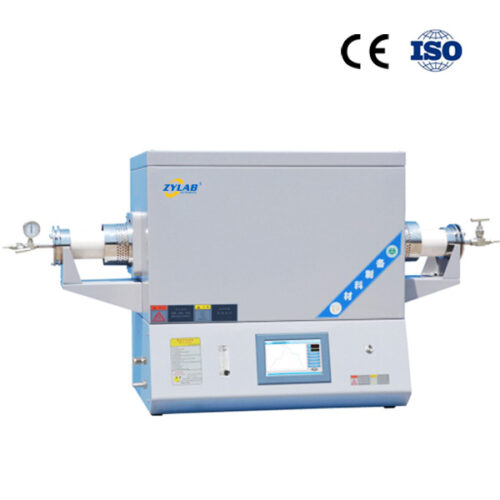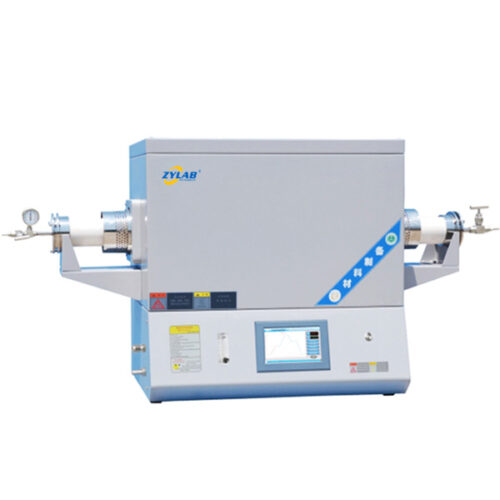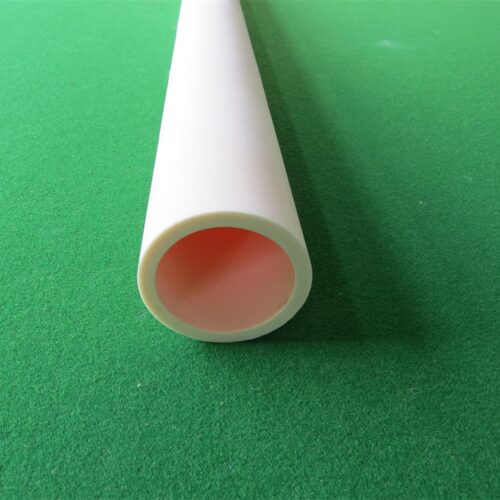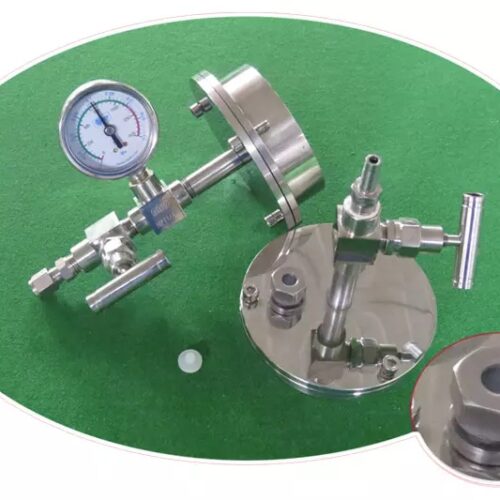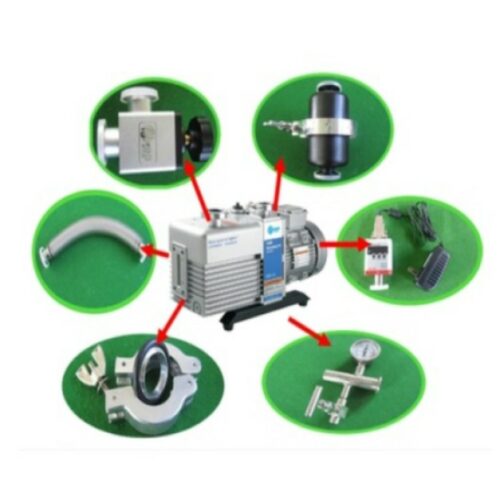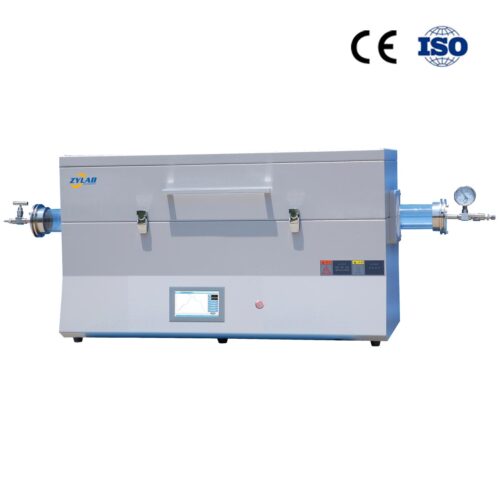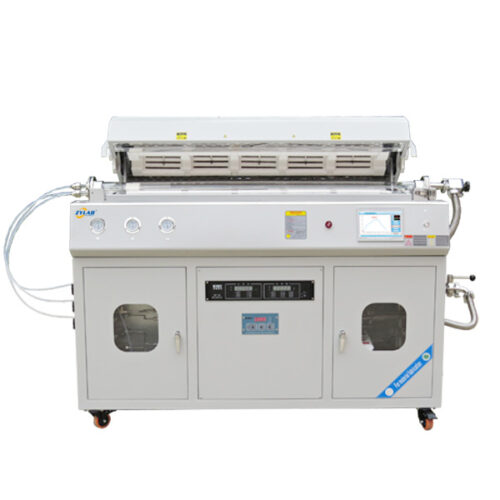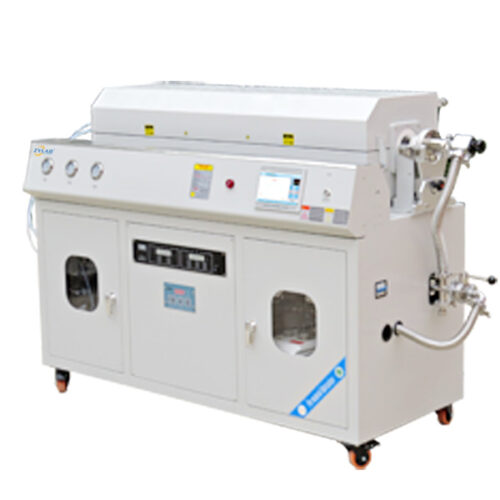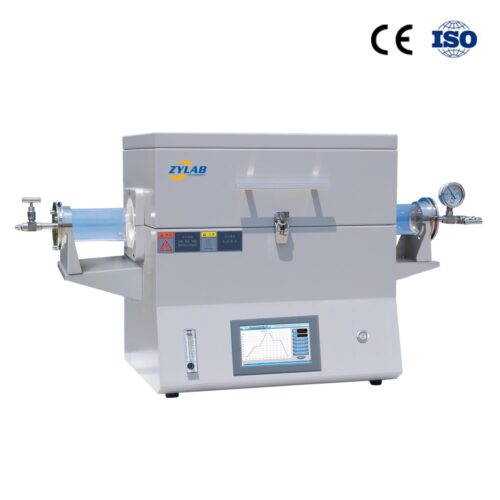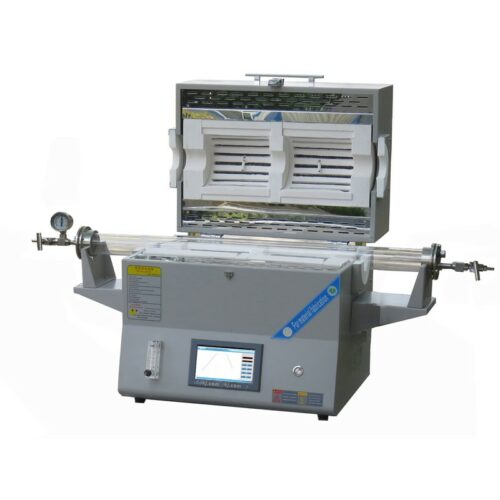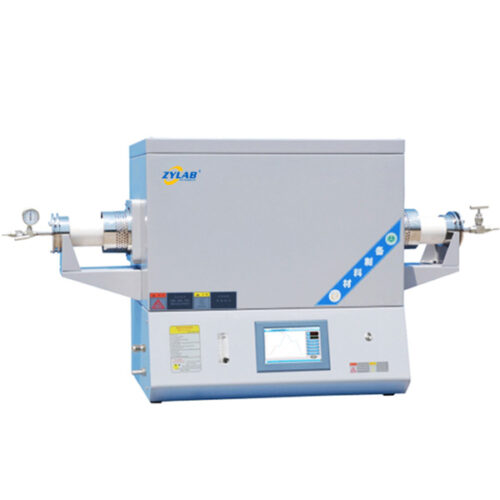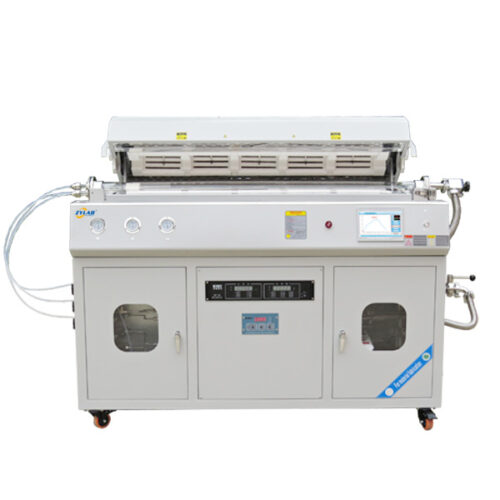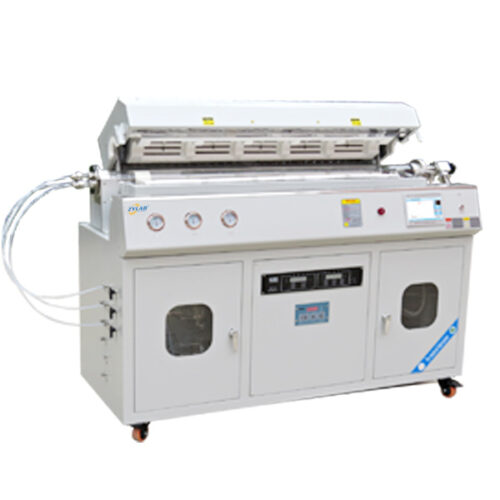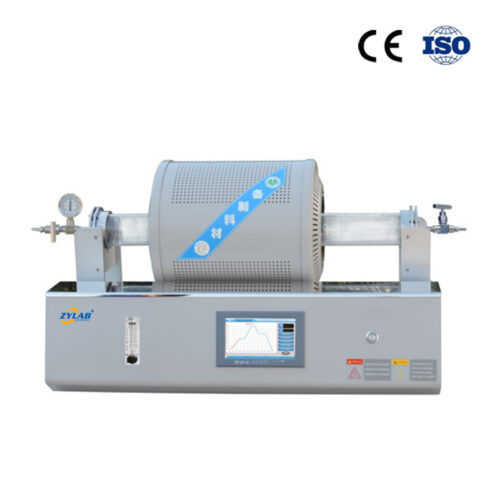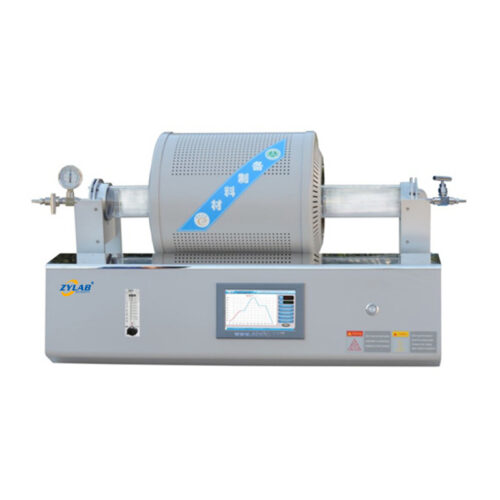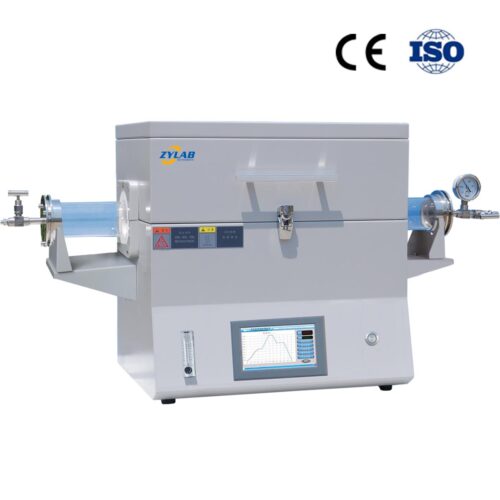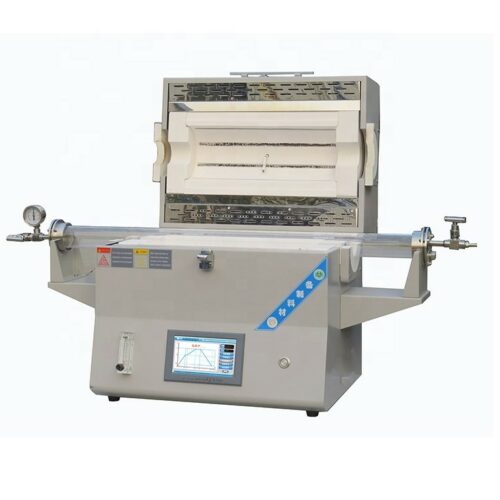1500.C Dual Zones High Temperature Tube Furnace
Introduction:
This high temperature tube furnace is widely used in CVD experiment whose reacion temperature is around 1400 degree celsius. It can also used in vacuum sintering, sintering under vacuum atmosphere protection, nano material preperation, battery material preperation and other research field.
Main Features:
1. Max. Temperature 1500C, suggest working temperature RT-1450C.
2.High purity alumina(ceramic) tube as furnace tube, with excellent corrosion resistance and high temperature resistance, longer service life.
3. 30 segments programmable and auto control.
4. Intelligent 7”Color Touch screen LCD man-machine English interface temperature controller, more intuitive and convenient operation, the graph of sintering curve with temperature changes makes you clear at a glance.
5. Can presetting 15 sintering curves to avoid the trouble caused by repeated settings of different experimental processes.
6. High purity alumina inorganic refractory, overall vacuum molding chamber, energy saving and ensure uniformity of temperature zone and a fast heating rate.
7.By using special lining import from Japan and high quality sic heating elements, to ensure excellent heating and long using life.
8. Double layers steel casing with fan cooling, to ensure the surface of furnace below 50.C, safety for the operator.
9. Come with gas flowmeter, atmosphere sintering more convenient.
10. Unique flange has a multi-function test holes, insert the corresponding electrode to test tube temperature or atmosphere environment.
11. Have two temperature zones, each can be independently controlled.
12. Low power consumable, exquisite structure and light weight, it is the ideal tube furnace for labs and production in factory.
Main Specifications:
| Model | T1500- IIT |
| Product name | 1500.C Intelligent dual zones high temperature tube furnace |
| Display mode | 7 inch color touch screen smart fuzzy PID control |
| Chamber material | Imported high quality alumina fiber refraction insulation |
| Heating element | High quality SiC rod |
| Max. temperature | 1500.C (< 1hour) |
| Working temperature | ≤1450.C(continue) |
| Heating rate | 0-20.C/min |
| Length of heating zone | 230+230mm |
| Heating zone quantity | Two(dual temperature zones can be independently controlled) |
| Tube size(mm) | Optional sizes: Φ50*1200/ Φ60*1200/ Φ80*1200 |
| Temperature control | 30 segments programmable and PID auto control |
| Accuracy | ±1℃ |
| Operating Interface | English Graphical Interface |
| Sealing Mode | Vacuum Flange |
| Gas tightness | 4.03×10-3pa |
| Flow control | 20-200ml/min |
| Presetting curve | 15pcs sintering curve |
| Protection setting | Over temperature alarm, Over-current protection, broken
thermocouple prompt |
| Thermocouple | S type |
| Certification | CE,ISO |
| Power | 380V 50Hz(as requirement), 5KW |
| Dimensions | 800×750×540(mm) |
| Net weight | 100kgs |
| Standard Accessories | Alumina Tube, Vacuum Flange, Vacuum Gauge, Gas Flow Meter, Tube Block, O-ring, Protective Gloves, Crucible Hook, Manual Book |
| Warranty | 12 months(not including consumable parts, such as alumina tube, heating elements, thermocouple, etc), lifetime support. |
Applications:
High-temperature tube furnaces, including the “1500.C Dual Zones High Temperature Tube Furnace,” have a wide range of applications in various fields of science and industry. Some of the common applications include:
Materials Science:
High-temperature tube furnaces are widely used in materials research and development. They are essential for sintering, annealing, and heat treatment of various materials, such as ceramics, metals, composites, and semiconductors.
Chemistry:
In chemistry laboratories, these furnaces are used for organic and inorganic synthesis, decomposition, and purification processes that require high temperatures. They are also used for catalyst preparation and activation.
Research and Development:
High-temperature tube furnaces are used in research and development of new materials, products, and processes that involve high-temperature reactions and treatments.
Nanotechnology:
They play a crucial role in the production of nanoparticles and nanomaterials, as well as for studies on their properties and applications.
Electronics:
High-temperature tube furnaces are utilized in the fabrication of electronic components, such as ceramic capacitors, resistors, and semiconductors.
Metallurgy:
These furnaces are employed for heat treatment processes in metallurgy, including annealing, hardening, tempering, and brazing of metals.
Glass and Ceramics Industry:
High-temperature tube furnaces are used for glass and ceramics production, melting, and annealing.
Research in Physics:
In physics experiments and studies, these furnaces are used for high-temperature investigations, crystal growth, and phase transitions.
Environmental Science:
High-temperature tube furnaces are employed in environmental research for studying combustion processes, air pollution control, and emissions analysis.
Petrochemical Industry:
They are used for various high-temperature processes related to petrochemical products and catalyst research.
Aerospace and Engineering:
In aerospace and engineering applications, high-temperature tube furnaces are used for testing materials and components under extreme heat conditions.
Solar Energy:
They are used in solar research to study high-temperature materials for solar cells and other solar energy applications.
These are just a few examples, and the applications of high-temperature tube furnaces are continually expanding as research and technology advance. The ability to precisely control high temperatures in a controlled environment is crucial for many scientific and industrial processes.
Benefits:
High-temperature tube furnaces offer several benefits and advantages in various scientific and industrial applications. Some of the key benefits include:
Precise Temperature Control:
High-temperature tube furnaces provide accurate and precise temperature control, allowing researchers and operators to achieve specific temperature profiles for different processes. This level of control is essential for reproducibility and obtaining reliable experimental results.
Dual-Zone Capability:
Furnaces with dual-zone control allow for even more flexibility in temperature distribution along the tube, enabling complex processes and optimizing material properties across different sections.
Versatility:
These furnaces can handle a wide range of materials and processes, from ceramics and metals to organic and inorganic substances. This versatility makes them suitable for diverse scientific and industrial applications.
Uniform Heating:
The design of high-temperature tube furnaces ensures uniform heating of the samples inside the tube, minimizing temperature gradients and enhancing the quality of heat treatment processes.
Batch Processing:
High-temperature tube furnaces can process multiple samples simultaneously, which is beneficial for efficiency and productivity in laboratories and research facilities.
Safety Features:
Come equipped with safety features like over-temperature protection and emergency shutdown systems, ensuring safer operation during high-temperature processes.
Controlled Atmosphere Options:
Can operate under controlled atmospheres, such as inert gases or specific gas mixtures, allowing researchers to conduct reactions and heat treatments in controlled environments.
Energy Efficiency:
High-temperature tube furnaces are designed for energy efficiency, using insulation materials to reduce heat loss and minimize power consumption during prolonged operation.
Research and Development:
These furnaces play a crucial role in materials research and development, enabling scientists and engineers to study the behavior and properties of materials under extreme heat conditions.
Compact and Space-Saving:
High-temperature tube furnaces are often compact and take up relatively little space in the laboratory, making them suitable for both academic and industrial settings with limited space.
Process Automation:
Offer programmable temperature controllers and automation features, which streamline processes and reduce the need for constant manual intervention.
Scalability:
High-temperature tube furnaces come in various sizes and configurations, making it possible to scale up processes from small-scale laboratory research to larger industrial applications.
These benefits make high-temperature tube furnaces essential tools in a wide range of scientific research, materials development, and industrial applications that require precise and controlled high-temperature processing.
FAQ:
Q: How does a dual-zone high-temperature tube furnace work?
A: A dual-zone high-temperature tube furnace has two separate heating zones along the length of the tube. Each zone has independent temperature control, allowing researchers to create different temperature profiles along the tube. This feature provides greater flexibility for conducting experiments and processing samples that require distinct temperature conditions in different parts of the furnace.
Q: How to choose the right high-temperature tube furnace for specific applications?
A: When choosing a high-temperature tube furnace, consider factors such as the desired temperature range, sample size, dual-zone capability if needed, control and automation features, safety mechanisms, and compatibility with the materials and processes you intend to work with.
Q: Can high-temperature tube furnaces operate under controlled atmospheres?
A: Yes, high-temperature tube furnaces are designed to operate under controlled atmospheres, such as inert gases or specific gas mixtures. This capability is particularly useful for processes that require an oxygen-free or reactive environment to prevent sample oxidation or to facilitate specific chemical reactions
Q: Are high-temperature tube furnaces suitable for academic and educational purposes?
A: Yes, high-temperature tube furnaces are often used in academic and educational settings for teaching and research purposes. They are valuable tools for demonstrating high-temperature processes, conducting experiments, and providing hands-on experience to students in fields such as materials science, chemistry, and engineering. They offer an opportunity for students to learn about heat treatment, phase transitions, and material behavior under extreme heat conditions.

